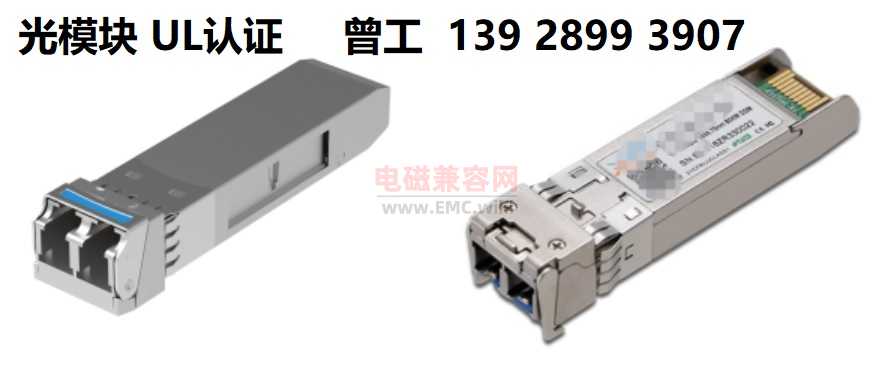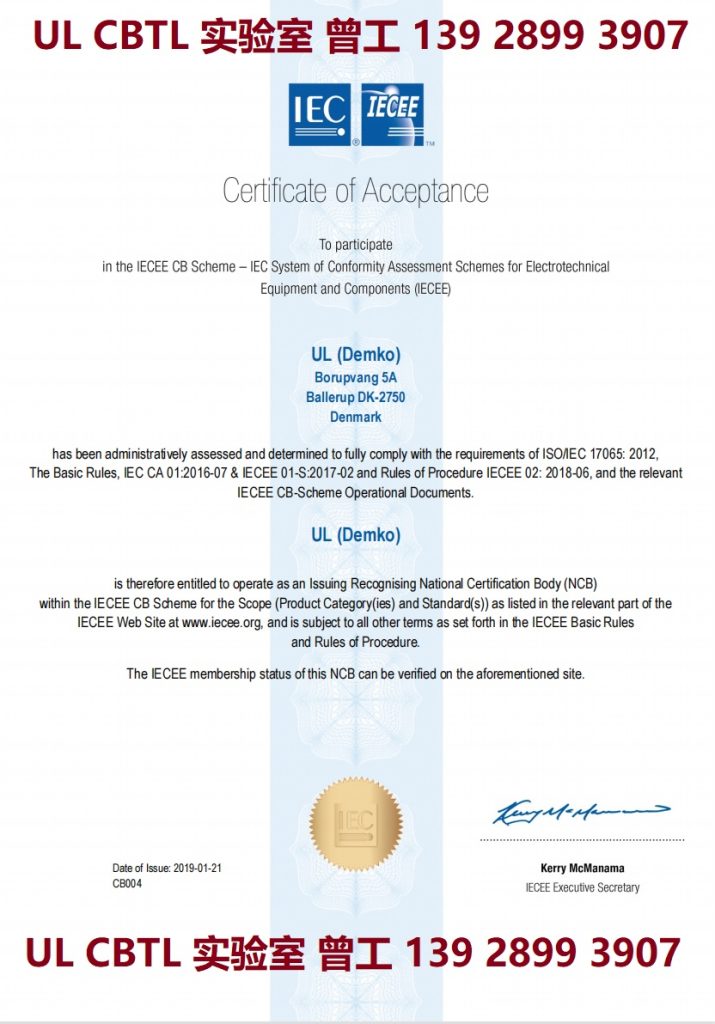Optical modules are optoelectronic devices for photoelectric and electro-optical conversion. The sending end of the optical module converts the electrical signal into an optical signal, and the receiving end converts the optical signal into an electrical signal. The optical modules are classified according to the packaging form. The common ones are SFP, SFP+, SFF, Gigabit Ethernet Road Interface Converter (GBIC), etc. The optical module is composed of optoelectronic devices, functional circuits and optical interfaces. The optoelectronic devices include two parts: transmitting and receiving. In short, the function of the optical module is to convert the electrical signal to the optical signal at the sending end, and then convert the optical signal to the electrical signal at the receiving end after transmission through the optical fiber.
UL CBTL Laboratory Zeng Gong 139 2899 3907 (WeChat same number)

Optical module UL certification
The optical module is composed of optoelectronic devices, functional circuits and optical interfaces. The optoelectronic devices include two parts: transmitting and receiving. In short, the function of the optical module is photoelectric conversion. The sending end converts the electrical signal into an optical signal. After transmission through the optical fiber, the receiving end converts the optical signal into an electrical signal. If the optical module is exported to the United States, it needs to be certified according to UL62368-1. Now we will introduce the test items, data preparation and process steps of the optical module UL62368-1:
1、 Test items of optical module UL62368-1
- Input/output test
- Leakage current from enclosure measurement
- Risk of Electric Shock
- Normal&Abnormal Temperature Test
- Class P – Default Condition Tests – Electronic Ballasts (Class P)
- Dielectric Voltage Withstand Test
- Drop Test
- Strain Relief Test
- Mold Stress Test
- Humidity Test
2、 The data to be prepared are as follows
- Product application form;
- Product Specification
- Circuit schematic diagram
- PCB Layout
- Bill of Materials
- Product structure dimension drawing
- FDA CDRH report
3、 Certification process introduction and cooperation steps are as follows
- Fill in the application form;
- Start quotation;
- Confirm the quotation and sign the contract;
- Pay, open a case, and cooperate with our ITLCBTL laboratory to sign back the agreement when opening a case;
- Provide samples and data;
- Start the test and coordinate with the customer to sort out the product data;
- Close the case and issue the certificate;
Advantage

Contact us
Tel: + 86 139 2899 3907
Email: xiangwei.zeng@gmail.com


